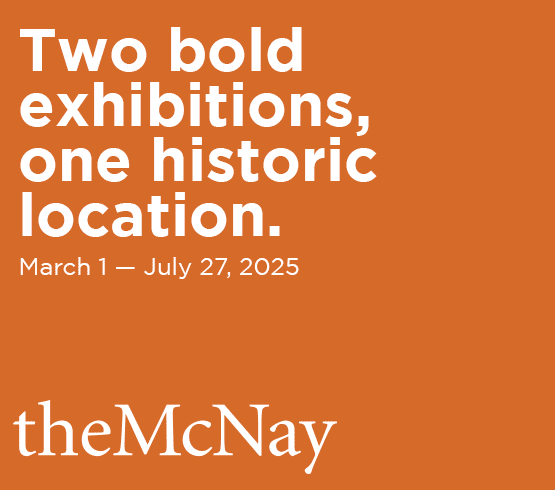For 75 years, the Contemporary Arts Museum Houston (CAMH) has sought to engage its community in a dialogue that stems from its inaugural exhibition: This Is Contemporary Art (1948). In that first exhibition, the show displayed household items alongside artworks.
“From the outset, we knew that we wanted a diverse group of artists working across mediums and at different points in their careers,” Matalon explained. To provide a fuller reflection of the interdisciplinary nature of the museum’s mission, they sought out artists who integrate a variety of media into their practices as well as varied perspectives on how they approach artmaking and art history.
Matalon continued, “We wanted a group of artists who would approach the prompt–to respond to CAMH’s inaugural exhibition–from different positions, whether from a position of criticality or playfulness, or some combination.”
Matalon highlighted that “despite the undeniable joy emanating from JooYoung Choi’s work, this installation contains serious undertones.” During her research, Choi was disturbed by the racialized history of the Houston arts community “when MFAH’s policies prevented racially integrated visitors from visiting the museum on the same days, or even barred exhibiting artist Jacob Lawrence from attending the show’s opening.” In response, Choi’s installation serves as a teleporting spaceship that negates the efforts of both gatekeepers and barriers.
This Is Contemporary Art (1948) sought to shed light on the presence of art in the everyday, as Restrepo states: “At its core, the show asserted that art and life as inseparable, art is essential to a full life, and art in the home is more than merely painting or sculpture.”
How art fits into life is something artists continue to explore, whether through interventions in public spaces or more covert means, as with Mel Chin’s Convo Pool, which recreates the pool set from Melrose Place. The work references his part in the GALA Committee, which produced conceptual works for use in the show. In lieu of commercial product placement, they experimented with the medium of TV as a means to promote social and political ideas.

1 ⁄6
Installation view of Six Scenes From Our Future at Contemporary Arts Museum Houston, 2023. Image courtesy Contemporary Arts Museum Houston. Photo courtesy Francisco Ramos.

2 ⁄6
Installation view of Six Scenes From Our Future at Contemporary Arts Museum Houston, 2023. Image courtesy Contemporary Arts Museum Houston. Photo courtesy Francisco Ramos.

3⁄ 6
Installation view of Six Scenes From Our Future at Contemporary Arts Museum Houston, 2023. Image courtesy Contemporary Arts Museum Houston. Photo courtesy Francisco Ramos.

4 ⁄6
Installation view of Six Scenes From Our Future at Contemporary Arts Museum Houston, 2023. Image courtesy Contemporary Arts Museum Houston. Photo courtesy Francisco Ramos.

5 ⁄6
Installation view of Six Scenes From Our Future at Contemporary Arts Museum Houston, 2023. Image courtesy Contemporary Arts Museum Houston. Photo courtesy Francisco Ramos.

6 ⁄6
Installation view of Six Scenes From Our Future at Contemporary Arts Museum Houston, 2023. Image courtesy Contemporary Arts Museum Houston. Photo courtesy Francisco Ramos.
In her work Homage RGB, Jill Magid appropriated public images to explore Mexican architect Luis Barragán’s dialogue with Josef Albers. She sourced virtual reproductions of images of Albers’s Homage to the Square hung in Barragán’s home. Magid scoured the Internet and social media to find, alter, and reform images into squares, dissecting the boundaries around authorship as well as what is public or private.
“Through varied approaches, both of these works, initiated decades apart, identify the implications of artwork that is encountered in private, domestic, or virtual viewing experiences versus public spaces,” Restrepo said. Design and architecture, and how they align and overlap with contemporary art, have been a core aspect of the museum’s mission.
“In the curatorial and museum fields we are witnessing increased attention to the importance of design—its historical influence on artmaking or as artmaking—in the ways we tell the story of artistic practices in the 20th and 21st centuries,” Matalon stated.
Lapinksi’s installation reflects on the importance of exhibition design and the ways it overlaps with the intricate millwork design of Houston department stores. “The Younger Set” recreates a department store, inviting visitors to sit with and consider the blurring boundaries between art and design.
Six Scenes From Our Future is a meditation on the museum’s history, reflecting on the city and its arts community. The exhibition serves as a sort of checkpoint, allowing visitors to engage with and consider how art fits into their own lives.
—MICHAEL McFADDEN





